The 'wiki' section of the site is the progress of being migrated from an old site. There are some rendering issues and many of the links don't work yet.
Predictive Coding
Introduction
Modules within striate cortex of Macaque monkey (Mountcastle, 1997):
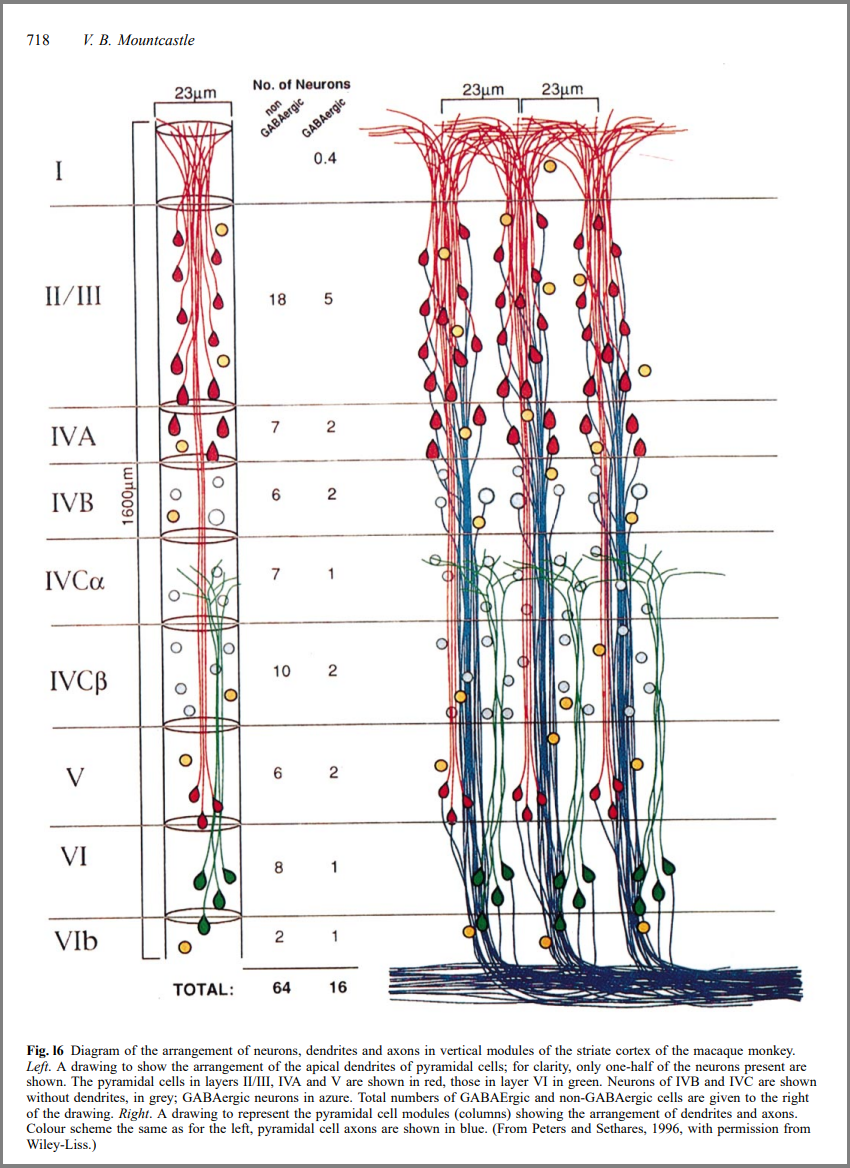
Columnar direction and axis (Mountcastle, 1997):
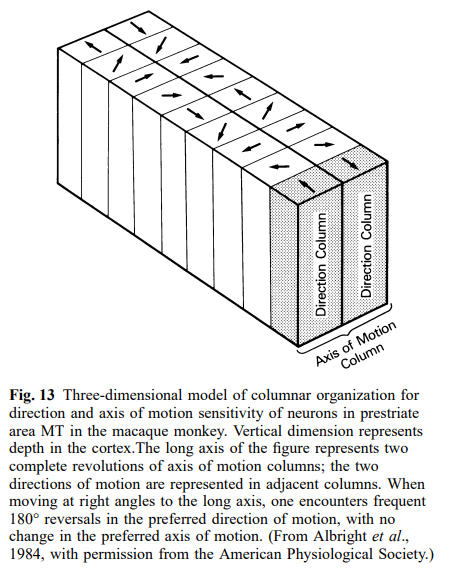
Module Structure
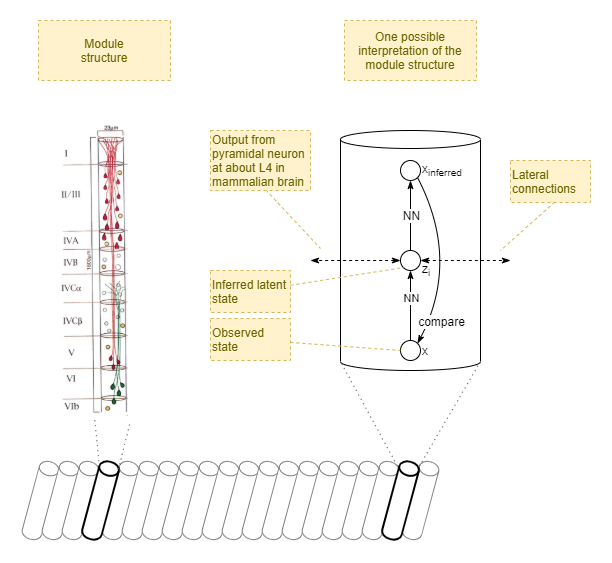
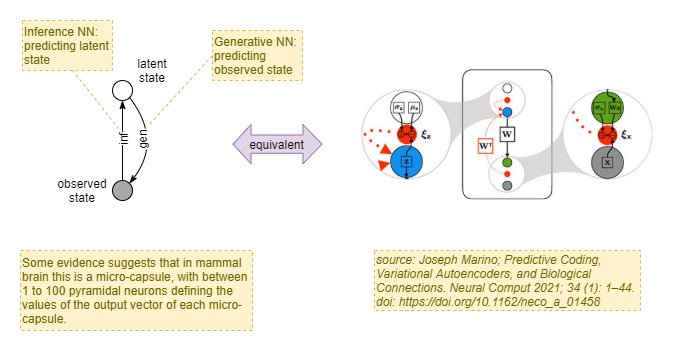
Hierarchical

In the mammalian brain, columns are oriented on the vertical axis, from inner-most to outer-most. A single hierarchical layer of columns roughly spans sideways (left/right) across the brain. Hierarchical layers are stacked on the forward/backward axis. This is indicated by this diagram pinched without authorisation from Marino (2021):
!forward and backward connections
Bayesian Background
Aleotoric Uncertainty
Given some generative process, where a latent state s (ie: unknown) produces an observation o (known), it is typically not the case that every exact value of s produces a consistent and unique value for o. Rather, the generative process usually has some variability. Thus, for a given value of s, the output o is sampled from a probability distribution p(o|s). This is the aleotoric uncertainty in the generative process.
Epistemic Uncertainty
If modelling the generative process, we also have epistemic uncertainty: factors in our modelling process that mean that our inferred model is not accurate. These can occur from over simplifications (eg: using a simple mean plus standard deviation to model the probability distribution), from systemic uncertainty in the structure of the generative process, from systemic variability in our measurements, and from the fact that the model has to be learned and thus starts off very inaccurate.
But the biggest epistemic uncertainty comes from the nature of the generative process itself. In addition to a generative process rarely producing consistent o for a given s, it also rarely produces unique values of o. Multiple different s can produce the same o. In other words, the probability distributions across multiple s often overlap. Thus, when inferring s from o even under a perfect model, there is also a probability distribution, p(s|o), that reflects the epistemic uncertainty in the value of s.
Notice that the distribution of p(s|o) can get very complex very quickly. For example, consider a simple generative process where two discrete values of s produce overlapping probability distributions for o. For a given o there are only two possible values of s, so the probability distribution p(s|o) is not at all gaussian.
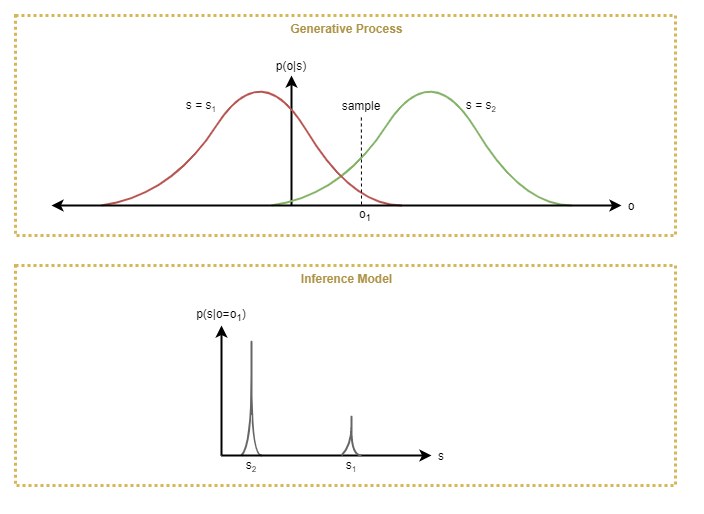
In practice, the epistemic uncertainty modelled as p(s|o) also reflects the systemic inaccuracies in the model.
Conclusion
So, when you see an expression such as p(y|x), it can be read as taking a precise value of x, but a distribution of possible y. Furthermore, in the following expression, while x is sampled from its own probability distribution, for each instance of the sum x takes a single precise value. And for each value of x, the distribution p(y|x) is independent of other probability distributions p(y|x) for other x.
`Σ_{x~p(x)} p(y x)
References
Mountcastle, V. B. (1997). The columnar organization of the neocortex. Brain (1997), 120, 701–722. [Full Text]